Mendel Brain
– Designing a landing page to communicate a new product strategy.
– Designing a landing page to communicate a new product strategy.
2 month design and consultancy project as a part of my exchange in Spain.
Project overview
During my European Project Semester, I together with 4 other international students from different educational backgrounds were given a project that involved working with a Spanish DNA analysis company develop a new entry-level analysis kit. "The Big 5" personality kit would produce a report showing how your genetics could affect your personality traits, but at the time Mendel Brain was unsure how they wanted to market it.
In this project I was tasked to take the team through the process of designing a landing page that communicated our vision and strategy for the product.
Link to project
👱♂️ My role
To lead a multidisciplinary team unfamiliar with UX/UI through a design process.
I was responsible for all designing in the project with the others working mainly on research and communication.
🧳 Company
Mendel brain – Biotech Startup
A Spain based startup working on DNA analysis in the same vein as 23 and me, focusing on health and mental well-being.
🔨 Tools used
Adobe XD, Figma, Adobe Illustrator and Miro.
Final Product
Explore the wireframe below. Interactive elements are highlighted in blue when clicking the frame. The major interactive element on the site is the "explore the traits" section.

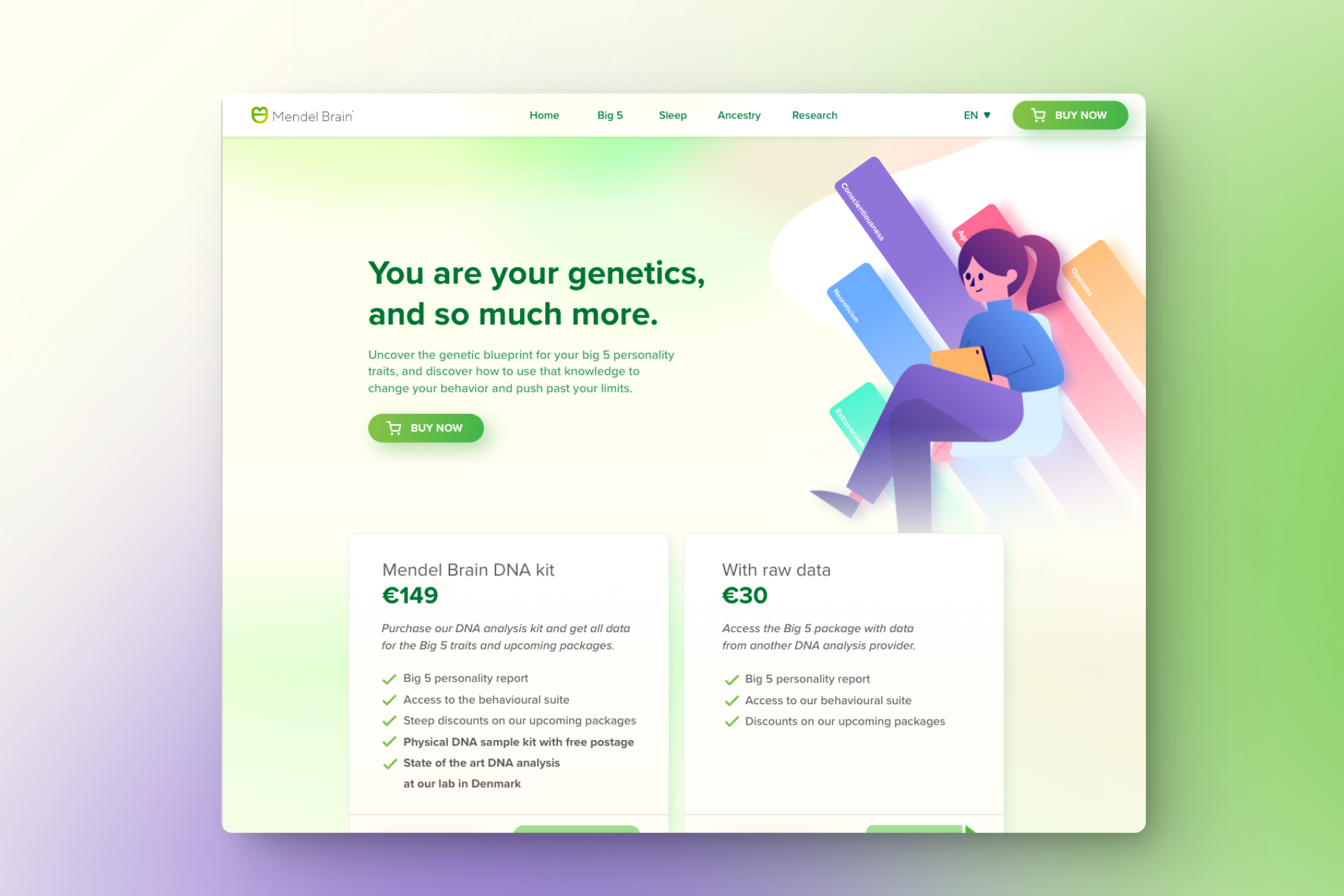
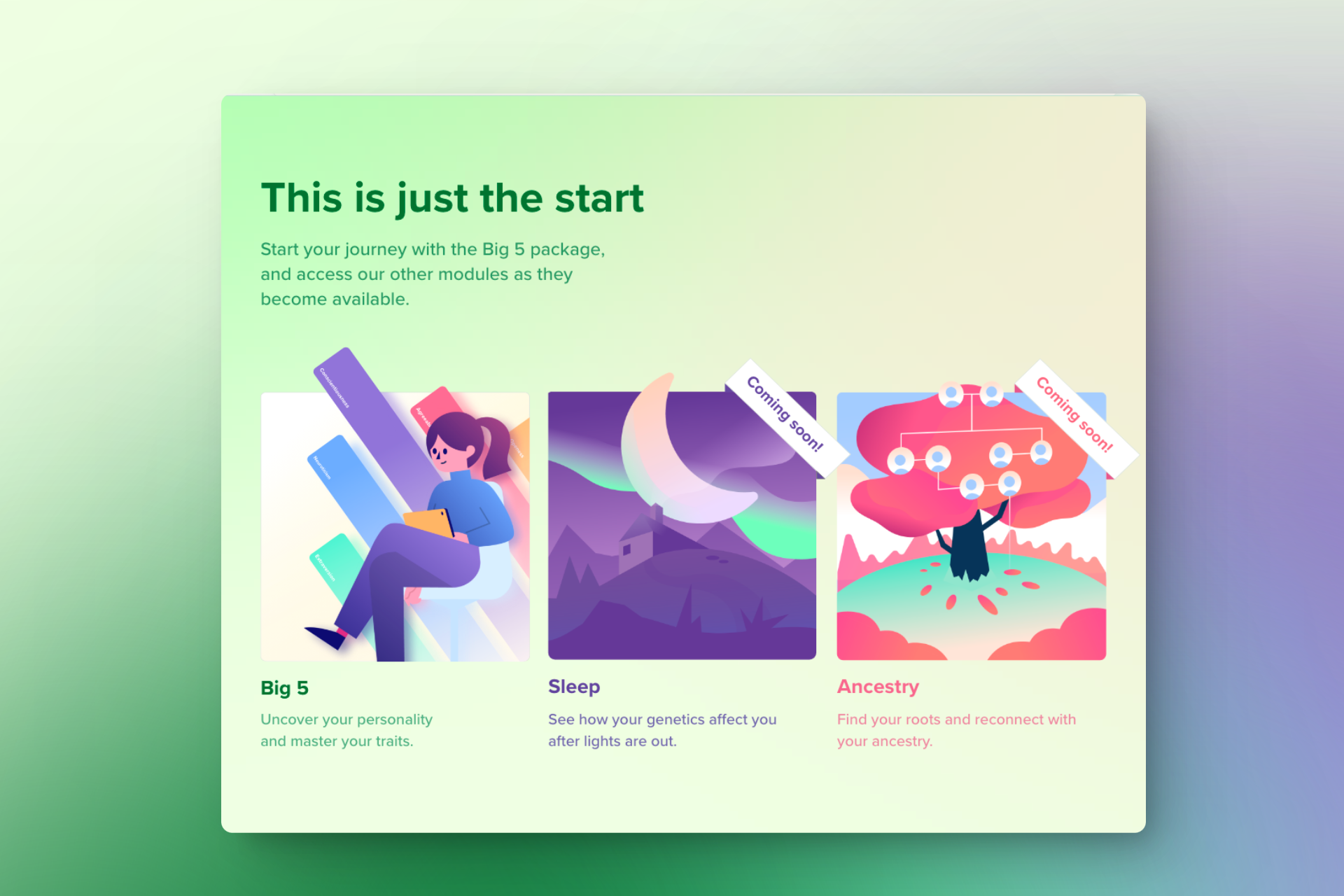

Process
Product definition
The core Mendel Brain product consists of a saliva test used to find genetic dispositions for over 50 traits. An issue they observed was that the price and scope of the test seemed to set the entry level too high. Looking at the popularity of 16 personalities and astrology zodiac signs among young people, Mendel Brain saw an opportunity to capture the same appeal using the "Big 5 personality traits". This would give them an entry-level product to upsell people on their 50 traits package.
What are the Big 5 personality traits?
The Big 5 traits are the current leading theory in personality psychology. It consists of 5 traits, each being on a sliding scale, where having more of one trait means it affects your behaviour more strongly. These traits remain mostly the same as we get older, and they are formed largely in our developing years, and through a partial link to our genetics.
This partial link is what Mendel Brain claims they can find through their new product.
Research
Using this as the base, we first started reading and exploring the appeal of these "competing" personality systems: Astrology with zodiac signs, and the Myers Brigs 16 personalities. We did this by reading articles and studies online, while structuring our thoughts using virtual whiteboards during workshops.


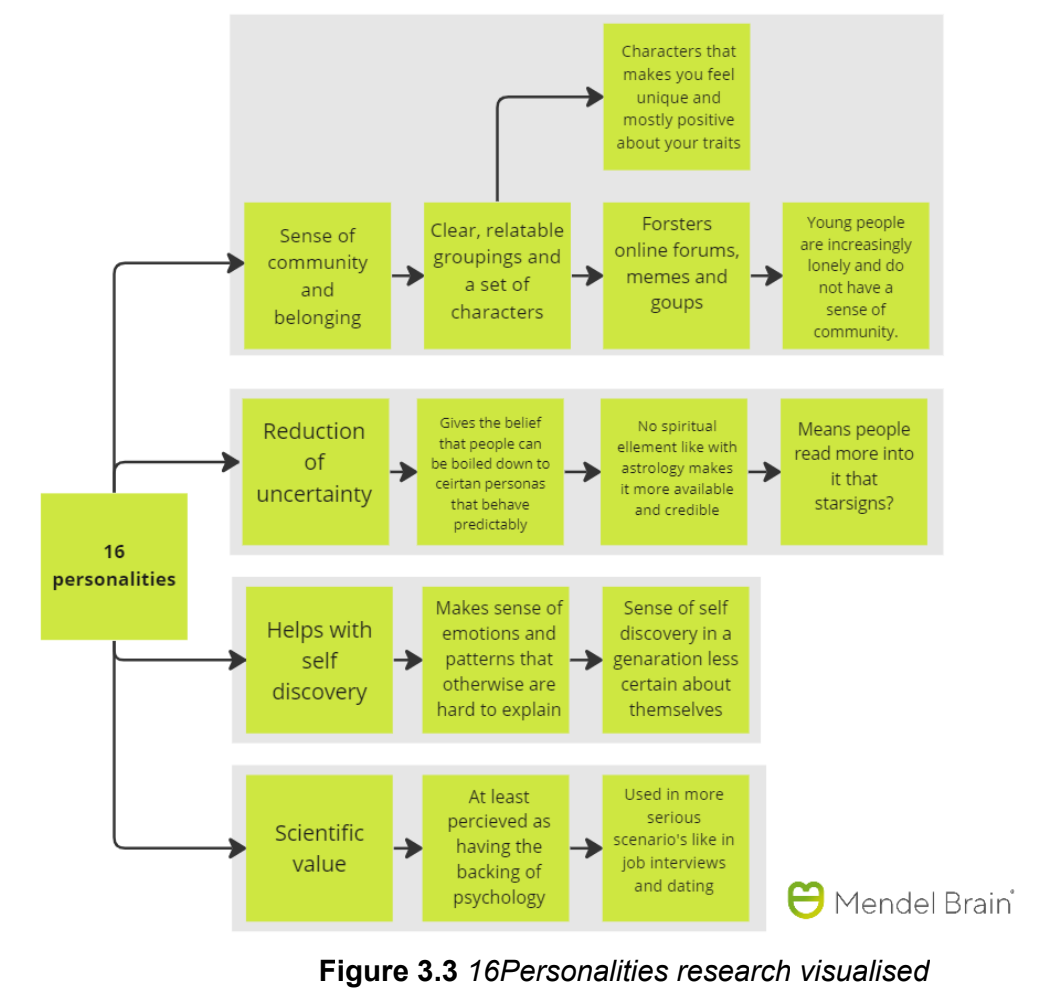
What we found, was 3 potential main appeals:
Comparing these to The Big 5, we found a problem. The Big 5 dosen't have the same at-a-glance convenience and relatable categories. You can't "read" other people as easily based on their label. We therefore wanted to find a different appeal.
What the Big 5 lacks in identity and relatability, it makes up for with its scientific backing and accuracy. If your goal is personal development, and not relatability and people reading, the accuracy of each system is the difference between reaching or missing your goal.
Defining the problem area
Finding our target demographic
The Big 5 could seemingly be a better tool for more accurately understanding your personality. We thought this would be appealing to young adults in their 20s, who are often in a period of establishing themselves, while still being uncertain about who they are. But with this our team was split on some fundamental issues:
· Is the Big 5 at odds with how young adults perceive personality, as something we can change and improve on?
· Is the idea that your personality is set through factors outside of your control unappealing?
· If it is indeed true that it is static, would people think it's an obstacle to be overcome, or a strength to be utilised?
· Is the idea that your personality is set through factors outside of your control unappealing?
· If it is indeed true that it is static, would people think it's an obstacle to be overcome, or a strength to be utilised?
Behaviour vs Personality
The Big 5 dosen't outright state you can't change. While your personality traits might be static, your behaviour isn't. Behavioural psychology is complex, so to simplify it we created this metaphor with the help of the in house psychologist.
Your traits are the undercurrent that drags you towards decisions, and the more you have of a trait, the stronger the current. However, if you are aware of the current, you can use effort to swim against it.
Our team had two prevailing angles on how this could be used to appeal to our demographic:
· Your personality is fixed, and while you can work against it in the short term, it is in your best interest to work with it.
· Your personality is fixed, but you can change your behaviour to overcome it in a situation where it is needed.
· Your personality is fixed, and while you can work against it in the short term, it is in your best interest to work with it.
· Your personality is fixed, but you can change your behaviour to overcome it in a situation where it is needed.
Survey
We decided to step back and do some more research by doing a survey among our fellow students. The goal was to find out how they perceived personality, regardless of how "true" it was. We asked 31 participants using an online form to rate questions from strongly disagree to strongly agree.
Some key takeaways were
· People were split on if their personality was something that got in their way.
· A majority said that there were aspects of their personality they wanted to change.
· Most people disagreed that your personality is fixed.
· 80% found "You can change your behaviour" to be the more appealing angle.
· A majority said that there were aspects of their personality they wanted to change.
· Most people disagreed that your personality is fixed.
· 80% found "You can change your behaviour" to be the more appealing angle.
Among our demographic there seems to be a desire to change aspects of their personality. However, if the Big 5 is correct, it means they might wrongfully be focusing on their underlying traits, rather than their behaviour. This is an area where Mendel Brain could help.
User persona
To reflect this struggle we created the user persona Marta D, a young and ambitious artists that is plagued with the nagging thought that she doesn't really "know" herself, because there are undercurrents of personality she isn't aware of. We used this as a guide when creating the brand, and thinking how to make the core message appealing instead of discouraging.
Defining a problem statement
After the survey we felt we had enough data to define a problem and how Mendel Brain's new product might help:
Problem
"People want to change their personality, but if the Big 5 is accurate, people might be putting effort into changing something they can't"
"People want to change their personality, but if the Big 5 is accurate, people might be putting effort into changing something they can't"
Value preposition
"By using genetic science and The Big 5, Mendel Brain can show the user the nature of their personality, and redirect their effort towards their behaviour".
"By using genetic science and The Big 5, Mendel Brain can show the user the nature of their personality, and redirect their effort towards their behaviour".
Because we only had little time left, we decided that our final deliverable should be a high fidelity prototype for a one pager. This would be within the scope of our project, while providing Mendel Brain with production ready layout and visuals that could be incorporated on their website.
Prototyping

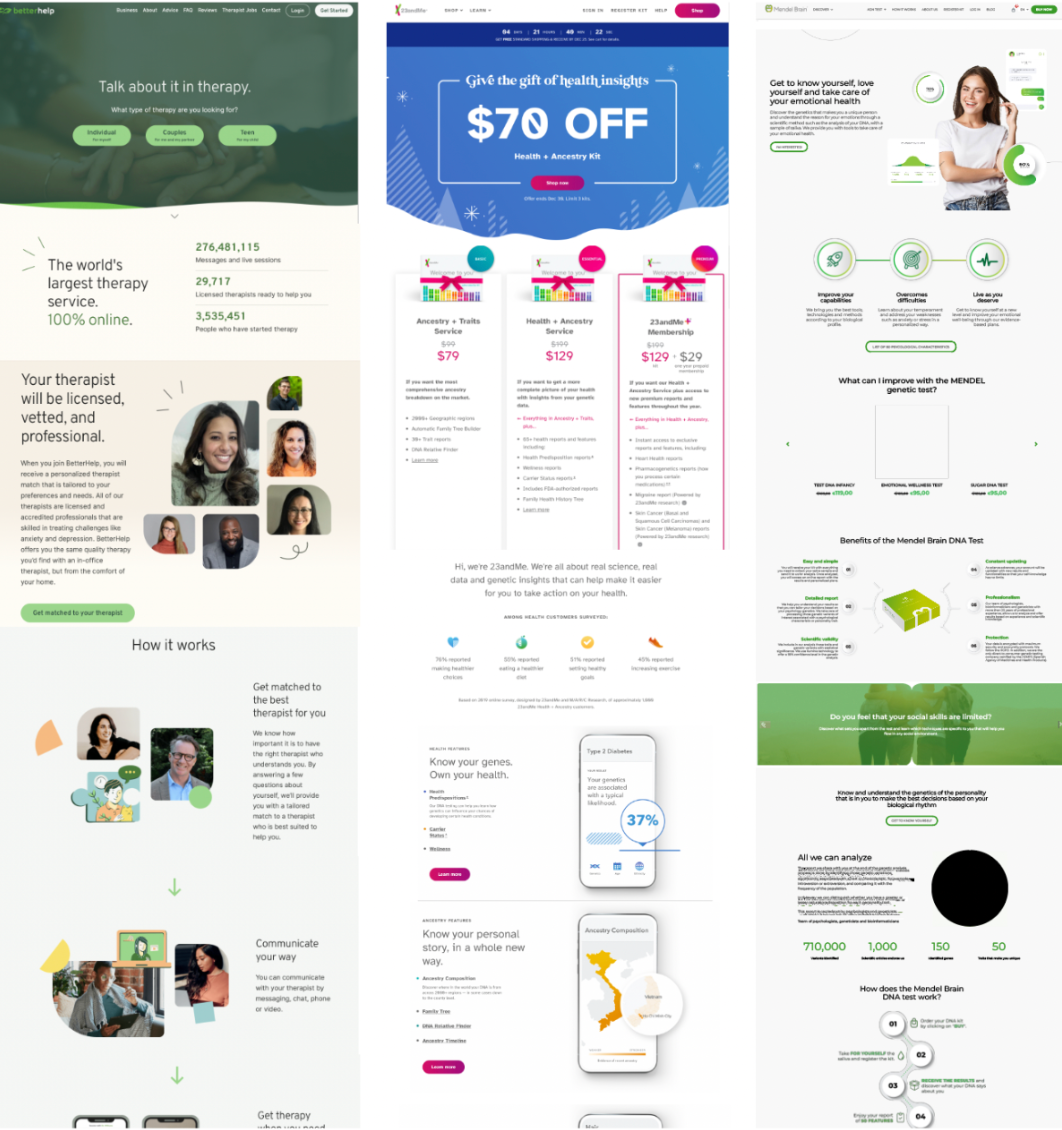
Low fidelity
For the low fidelity we focused on structure and outline of what each section should communicate. We first looked at some pages from competitors, finding what sections are commonly included. Each member then blocked out which sections could be included.
Mid fidelity
We debated the benefits of each layout, and combined them into what we deemed the most efficient way to structure the page. Our general priority was:
1. What is the product?
2. How is it valuable to our persona?
3. Any additional info
2. How is it valuable to our persona?
3. Any additional info
We then took this combined layout and turned it into a mid fidelity, where we focused on writing a website copy, finding a brand voice and the general blocking of the website in several iterations.
For the branding we wanted to acknowledge the struggles of self development through a positive lense, focusing on curiosity, empathy, honesty and transparency. Transparency was especially important, given that Mendel Brain was asking users to provide both their DNA and information about their inner life and personality.
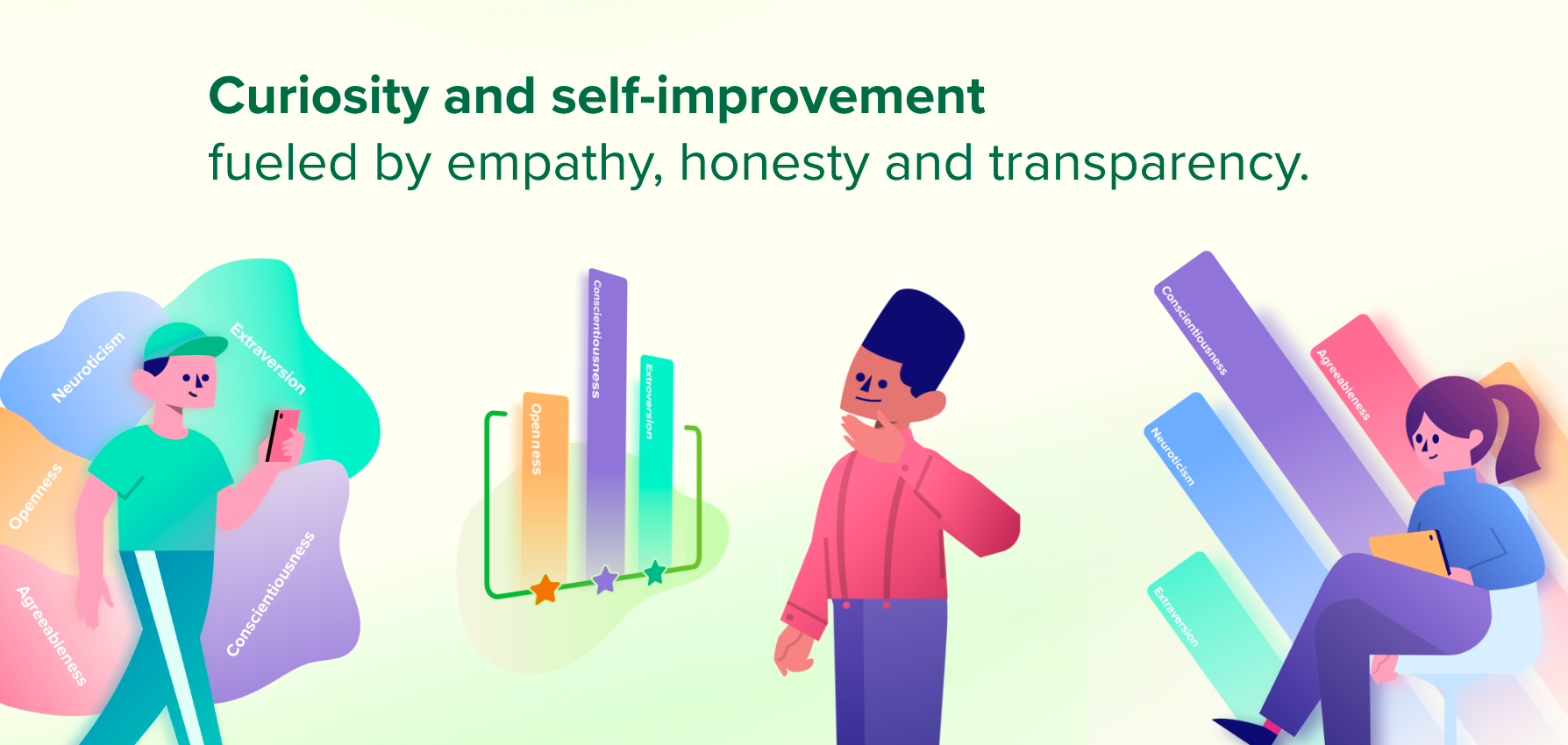
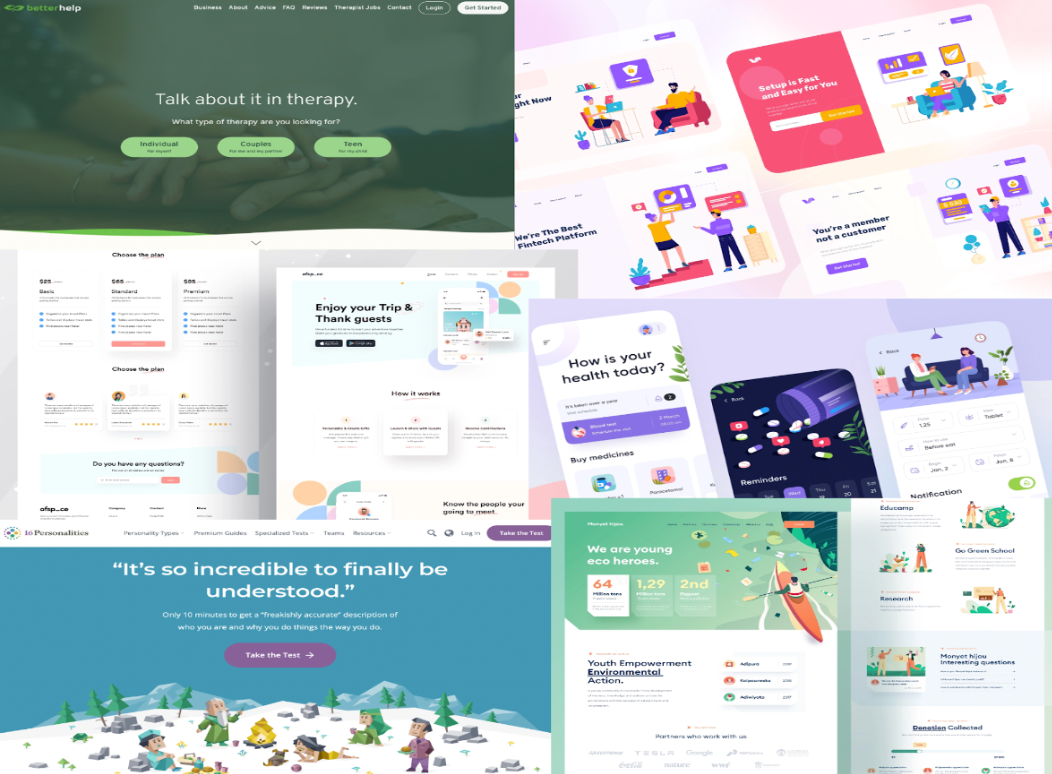
High fidelity
Using the brand voice as a guide, we created a moodboard to combine Mendel Brain's previous website with a contemporary art style and custom illustrations. We then used these illustrations and colour pallet to create the first iteration of the high fidelity prototype.
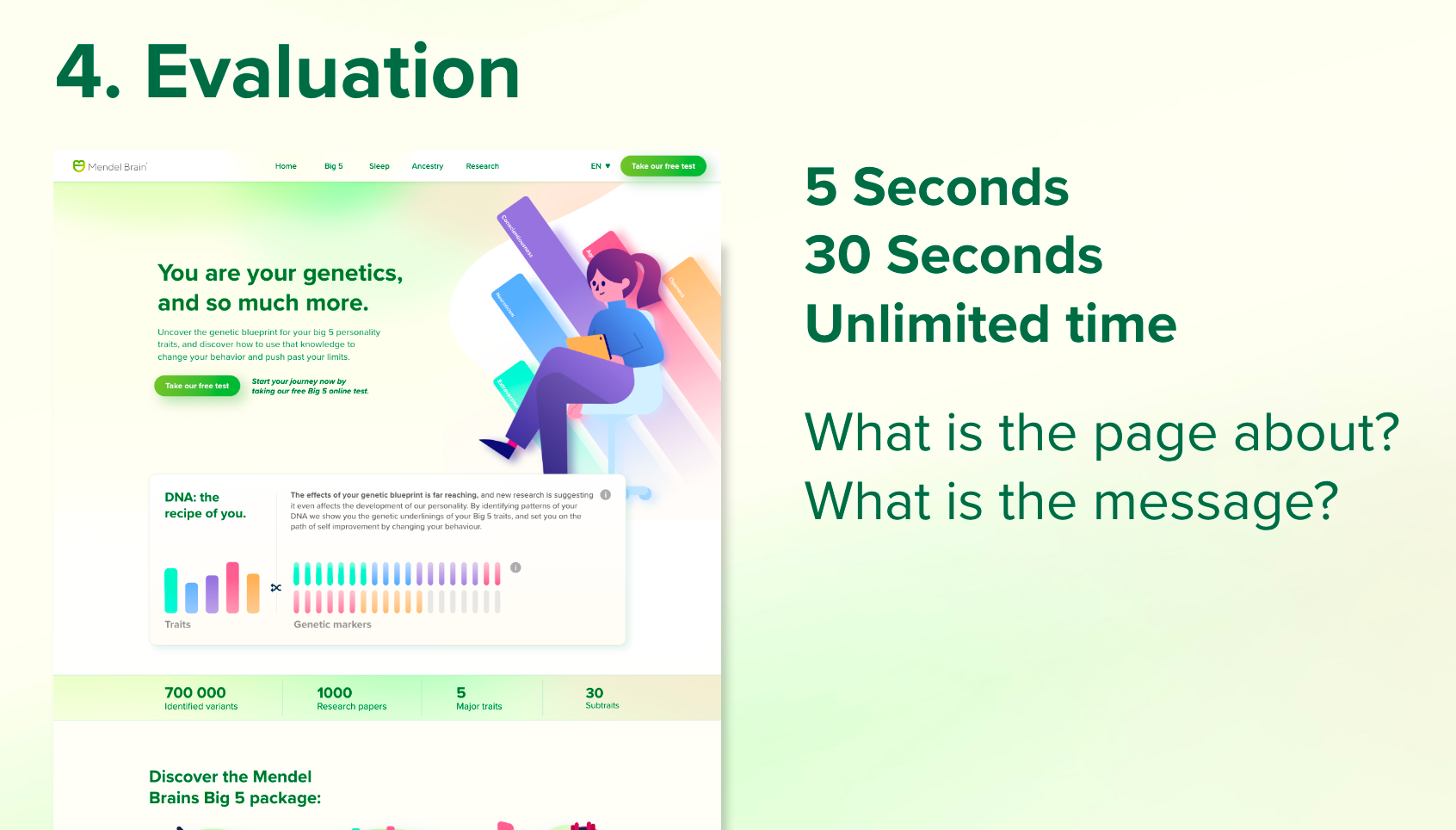
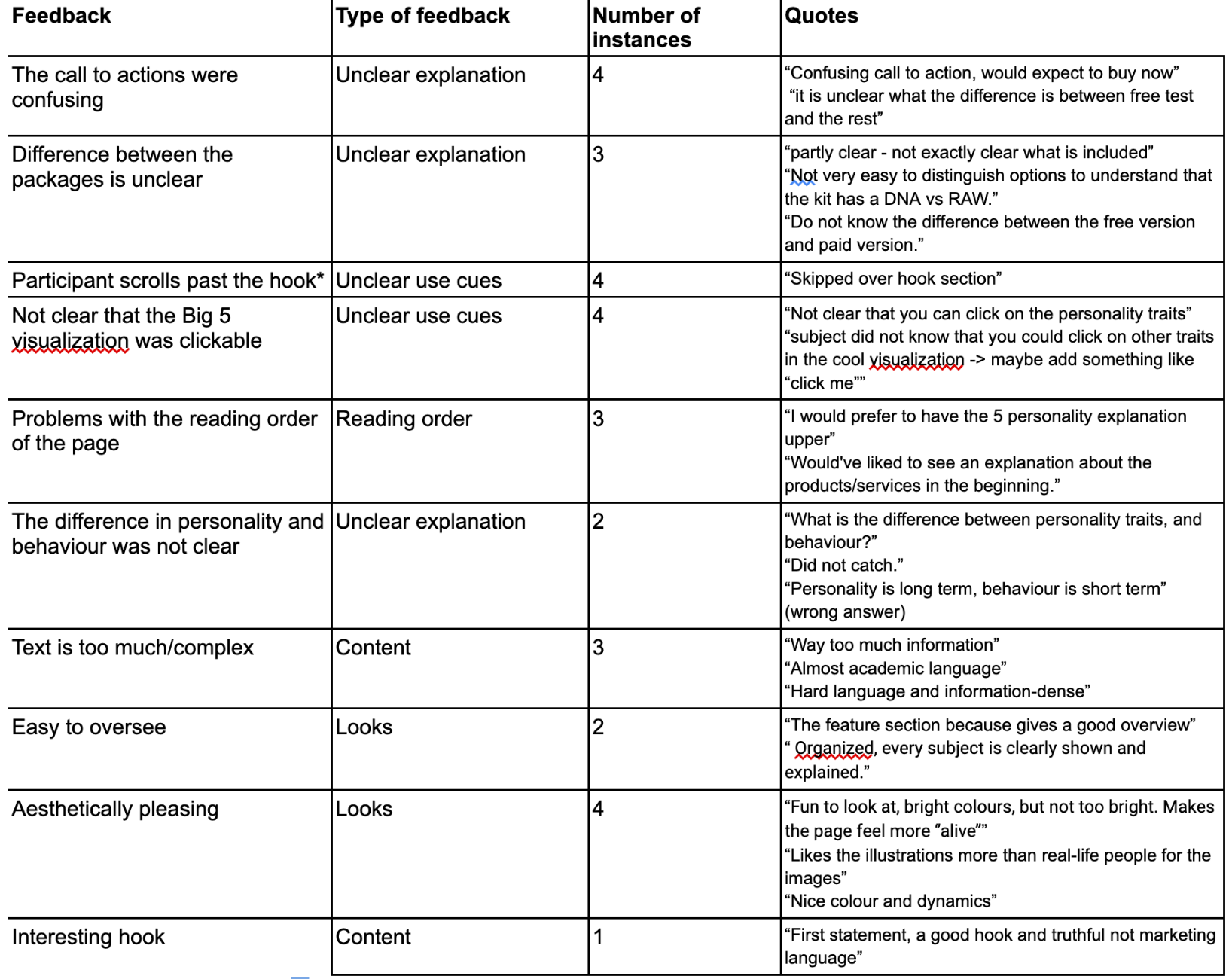
Evaluation
We then used this prototype to sit down and have a walkthrough with 5 different users. Since there weren't a lot of interactions, we focused primarily on information hierarchy and seeing how much information the user could read in a set amount of time. We then asked them to rate several aspects of the website, like information clarity and visuals. Implementing the most common feedback, we ended up with our final prototype shown in the final product section.
Impact
During the project we were working separately from Mendel Brain, who were going for the initial angle of competing with 16 personalities. After pitching our idea and website, they were thoroughly impressed, and decided at the time to pivot towards using our idea of self help through behavioural change.
